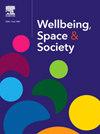Placemaking for tenant wellbeing: Exploring the decision-making of public and community housing providers in Aotearoa New Zealand
IF 2.2
Q2 GEOGRAPHY
引用次数: 0
Abstract
In addition to housing tenants, many public and community housing providers engage in placemaking to foster tenants’ connections to people and place. This paper reports on the placemaking practices of four community housing providers and two urban regeneration programmes in Aotearoa New Zealand. Twenty-four semi-structured interviews were conducted with provider staff – including those leading strategy, community development, tenancy management, planning and design efforts – to investigate the placemaking strategies adopted by providers and the values, priorities and investment tensions that underpin their decision-making. Common placemaking strategies included site selection to secure tenants’ locational access to community services and amenities, and designing shared ‘bump spaces’ into housing complexes to encourage neighbourly encounters between tenants. Efforts to foster a sense of community through increased stability and diversity of households were hindered by a predominance of single-person units in older housing developments, and by funding and regulatory constraints. Māori, the Indigenous people of Aotearoa New Zealand, comprise approximately half of all public housing tenants and many have deep intergenerational connections to place. Where providers were engaging with Māori, early steps had been taken to incorporate cultural landscapes and values into placemaking initiatives; such practices were more evident in urban regeneration than community housing provider developments, enabled by longer-term planning horizons, broader development mandates and partnerships with iwi (Māori tribes) and local government. Nonetheless, placemaking aspirations of all providers were tethered to resource constraints and investment trade-offs, with any social infrastructure provision weighed up against the value of providing one more home instead.
为租户福利而设计的场所:探索新西兰奥特罗阿公共和社区住房供应商的决策
除了为租户提供住房外,许多公共和社区住房供应商还参与了场所建设,以促进租户与人和地方的联系。本文报告了新西兰奥特罗阿四个社区住房供应商和两个城市更新项目的场所制作实践。对供应商工作人员进行了24次半结构化访谈,包括领导战略、社区发展、租赁管理、规划和设计工作,以调查供应商采用的场所制定策略以及支持其决策的价值观、优先事项和投资紧张关系。常见的空间规划策略包括选择场地,以确保租户能够使用社区服务和设施,并在住宅综合体中设计共享的“碰撞空间”,以鼓励租户之间的邻里接触。通过增加家庭的稳定性和多样性来培养社区意识的努力受到旧住房发展中单人单位占主导地位以及资金和监管方面的限制的阻碍。Māori是新西兰奥特罗阿的土著居民,约占所有公共住房租户的一半,其中许多人与地方有着深厚的代际联系。在与Māori合作的地方,已经采取了早期步骤,将文化景观和价值观纳入场所建设倡议;这种做法在城市更新中比社区住房供应商的发展更为明显,这得益于更长期的规划视野、更广泛的发展任务以及与iwi (Māori tribes)和地方政府的伙伴关系。尽管如此,所有供应商的场所建设愿望都受到资源限制和投资权衡的束缚,任何社会基础设施的提供都要与提供更多住房的价值进行权衡。
本文章由计算机程序翻译,如有差异,请以英文原文为准。
求助全文
约1分钟内获得全文
求助全文
来源期刊

Wellbeing Space and Society
Social Sciences-Social Sciences (miscellaneous)
CiteScore
2.70
自引率
0.00%
发文量
46
审稿时长
124 days
 求助内容:
求助内容: 应助结果提醒方式:
应助结果提醒方式:


